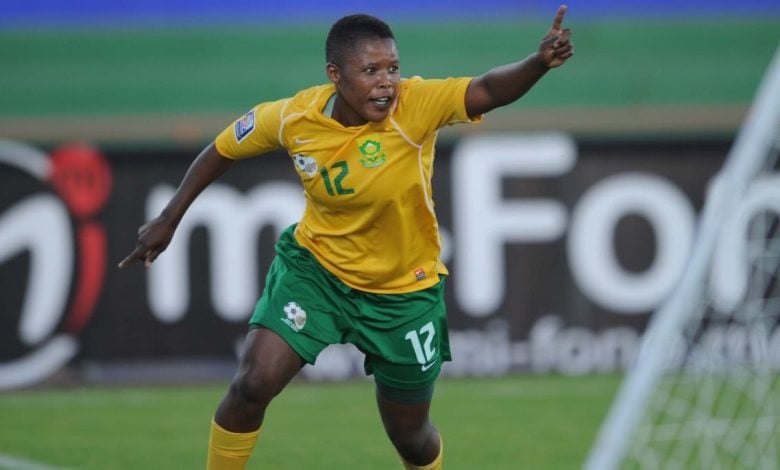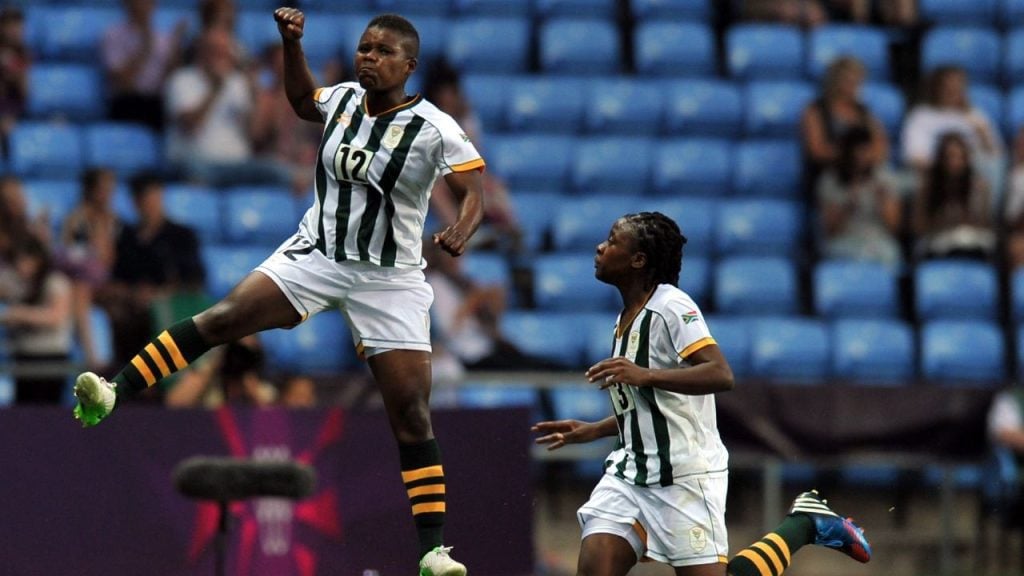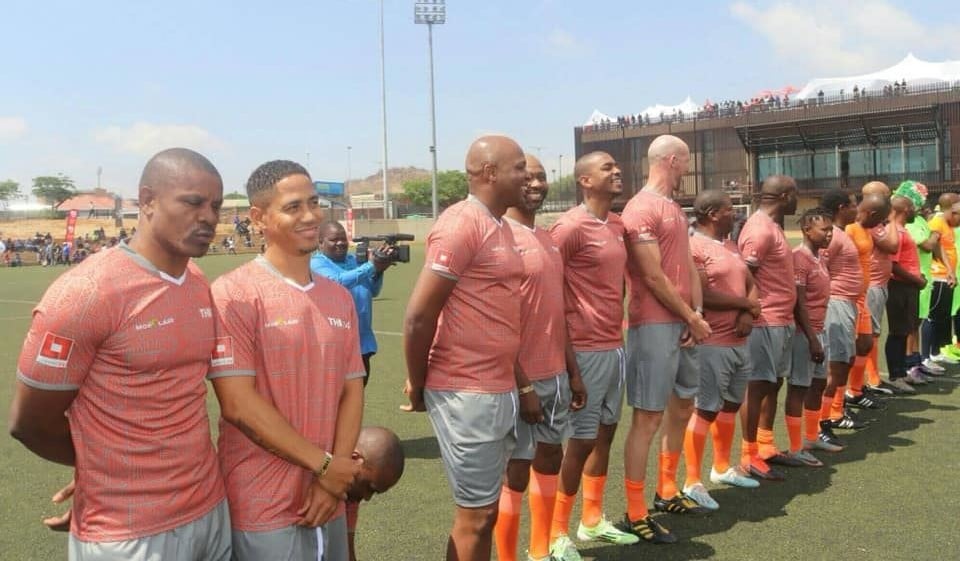‘I was selected to the School of Excellence with Pienaar’: Portia Modise

In another life, Portia Modise and Steven Pienaar could have been teammates!
At first glance, there seems to be little that links their names and careers. Sure, they were both talismanic footballers for their country at one point or another.
In their prime, any starting XI for their country that did not have the names Portia Modise or Steven Pienaar would have felt light, bereft of the star power that these two maestros brought to their respective national sides.
They both wore the armband for South Africa, captaining the Bafana Bafana and Banyana Banyana ships through both calm and turbulent waters.
It is, in fact, difficult to think of significant moments in the history of the national teams over the past two decades where their names did not feature prominently.
PORTIA MODISE’S RECORD-BREAKING CAREER

Who can forget Modise’s role in Banyana’s 2012 Olympic campaign, where she scored a stunner from little over the halfway line against Sweden, one of over a century of goals she would go on to rack up for the national team in a record-breaking career?
Or who can forget Pienaar’s leadership for Bafana in the 2010 World Cup, where he led a group of men on whose shoulders rested the hopes of not only a nation but an entire continent as well?
It is indeed difficult to think of any two sportspersons whose individual careers came to define their country’s fortunes on the field as much as Pienaar and Modise.
It is fair to say that when the history of Bafana and Banyana over the first two decades of the 20th century is written, their names will be written in bold.
Despite this, there seems little to link these two illustrious names in South African football.
They might have donned the same colours, but Bafana and Banyana were once, and perhaps still are, a world apart. Of course, there have been moves to put the two national teams on equal footing in terms of pay in recent times, but there is still some way to go before the women’s game can catch up to the men.
MORE FAME AND FORTUNE
With this in mind, it is perhaps no wonder that Pienaar amassed more fame and fortune than Modise, a superstar in her own right. She is, after all, the first African to reach a century of national team goals and, at one time, went for trials with the much-vaunted Arsenal Ladies’ side.
So, where do the two’s careers intersect?
Were it not for a fateful twist of fate, the two could have shared a dressing room at the famed Transnet School of Excellence.
“I was selected to be part of the School of Excellence with Steven Pienaar,” Modise tells FARPost. “They didn’t know I was a girl when they picked me.
“They wouldn’t allow me when they discovered that I was a girl. And they couldn’t keep me there because they would stay there as boys, shower as boys. I didn’t make a fuss of it, but I took their advice to find a ladies’ team.”

Paradise Moeketsi, one of the founders of the School of Excellence, remembers how, as he walked past a football ground in Soweto, he saw a talented young footballer, blessed beyond measure with skill and technique.
At that moment, the scout in him got excited, and the lines separating the two genders blurred. He had to get Modise, fondly called ‘Bashin’, after Albert ‘Bashin’ Mahlangu, into the School of Excellence.
KID IS PHENOMENAL
“She was around 12. It was in Soweto, and I was walking past the ground when I first saw her. I said this kid is phenomenal. and didn’t realise she was a girl; I thought she was a boy. I only realised after some time that she was a girl. It was tough for girls back then,” Moeketsi tells FARPost.
She was as good as the Argentinian maestro Lionel Messi in his eyes. “Bashin was gifted. It was not a case of me seeing a girl. I saw something special. She had everything – balance and coordination. She could juggle the ball and had good technique.
“Portia was the best technically. I took her to the School of Excellence. We admitted her there with boys like Steven Pienaar,” he adds.
Years after Modise rose to prominence, obliterating many records in an astounding career for club and country, Moeketsi still feels that her star would have risen further and higher if she had been allowed to play and develop with her male counterparts.
“She would go to the School of Excellence and train as a guest player. If she had been full-time, I’m sure all these global accolades that are available now, she would have won them,” he says.
If she had been accepted at the School of Excellence by some bending of the rules that govern the game, it would not have been the first time she would have had to play with boys.
She was only a teenager when she cracked the nod and made it for Banyana after stints with Rangers and Soweto Ladies. At the time, she had already got a taste of leadership, captaining the national Under 19 side.
SPEARHEAD THE ATTACK
At Banyana, she would be expected to be the spearhead of the attack. It was a role she had been perfecting ever since her education on the beautiful game in the township. Dustbins would be used as targets, with the defending side protecting the garbage can with all their life. She was ready to shine.
Her first goal came at the age of 15. That first goal would lead to 101 more for Modise in Banyana colours. But despite that illustrious career, she says that the life of a Banyana star was never easy.
Born in grinding poverty, like many youngsters in Mzansi’s townships, she viewed football as her way out of the ghetto.
However, while Pienaar went on to accumulate decent amounts of money abroad, the reality was different for Modise.
RELATED STORY: The jail visit that rescued Mpho Makola’s career